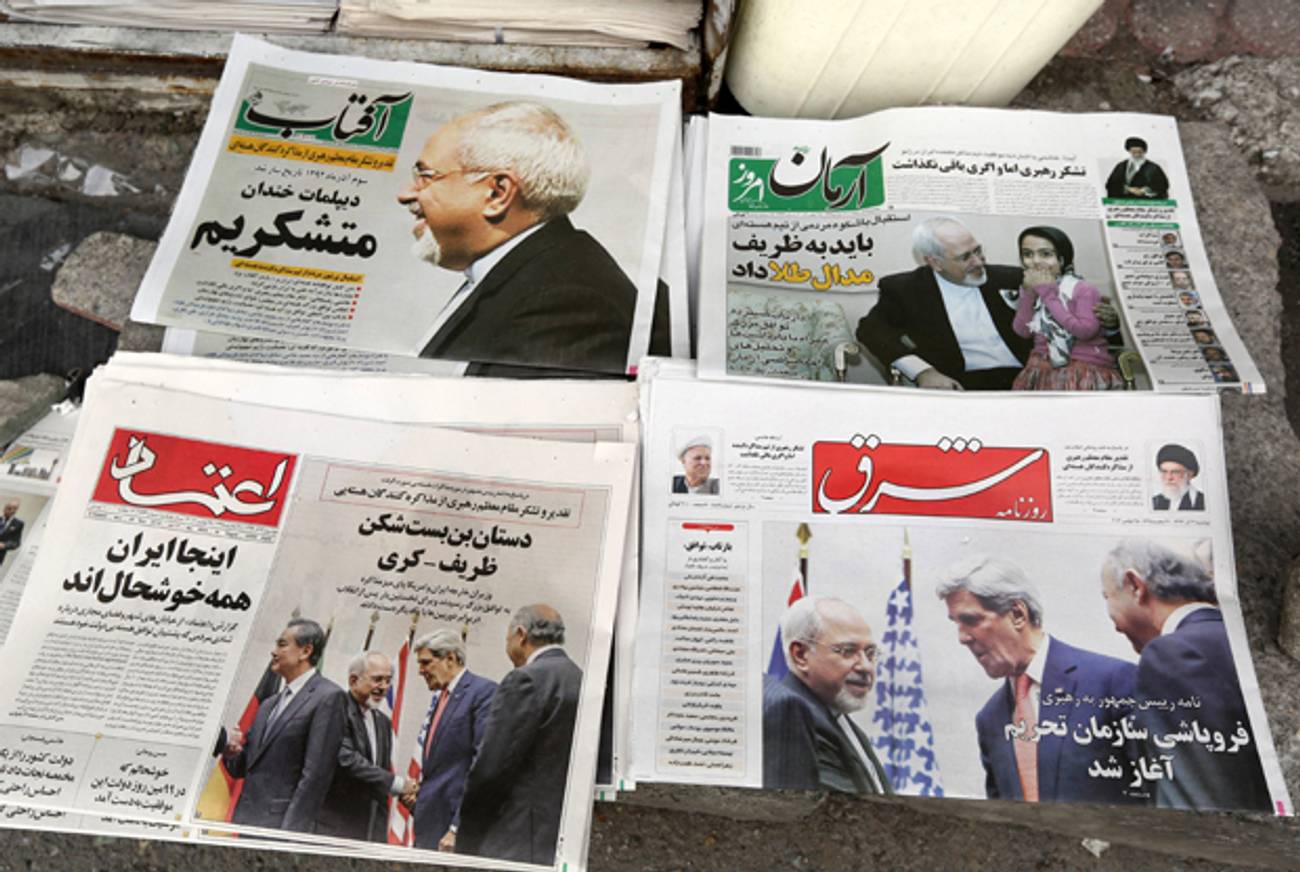U.S. Blindspot Shows on the Iran Nuclear Deal
Administration still unconvinced of the danger of Iran’s regional ambitions




The agreement announced early Sunday morning about the Iranian nuclear program gives Iran the ability to continue to make progress towards achieving a nuclear weapon, while offering it significant relief from the sanctions imposed on it because of the program.
This point is clear beyond doubt. According to the terms of the agreement, Iran is to be permitted to continue enriching uranium to 3.5 percent. Teheran will also not be required to cease centrifuge production. Regarding the heavy water reactor at Arak, which may form the center of a plutonium-led drive for a nuclear weapon–the Iranians have committed not to commission the reactor over the next six months. This is a meaningless concession, since Iran had already declared that it had no plans to commission the reactor before mid-to-late 2014.
The agreement also makes no mention of Parchin, the military production complex south east of Teheran where Iran carries out experiments with high explosives. The Iranian refusal to allow IAEA inspectors access to this site forms a key element of international concern. The Iranians appear to have made no concession of any kind in this regard.
So the core elements of the Iranian drive for a nuclear weapon remain entirely intact–the construction of centrifuges, the enrichment of uranium, the maintenance of the Arak reactor in its present state, and the unimpeded development of the technology and scientific capacity required to produce a nuclear explosive device.
In return for a series of concessions which do not affect these core principles, the sanctions on Iran’s gold and petro-chemicals exports are to be removed. Efforts to reduce Iranian sale of crude oil will be ended, and there will be no new sanctions. Sanctions will be reduced in a number of other related areas as well.
The newly announced deal appears to be the outcome of a long, unseen, bilateral negotiation between the U.S. and Iran, which in recent weeks as it neared fruition began to involve the other members of the ‘P-5+1’ countries. That is, the deal is a U.S. production—the Iranian incentive for accepting it is obvious. So why would the U.S. agree to an arrangement which fails to address the core concerns regarding Iranian nuclear ambitions?
What has become increasingly clear, and is now unmistakable, is that the present U.S. administration is simply unconvinced of the arguments made by its key regional allies that Iran’s regional ambitions represent a dangerous destabilizing force in the Mideast region.
This blind spot is strange. The evidence is plain to see: Iran is an active participant in the Syrian civil war. It dominates Lebanon through Hezbollah. It is closely allied with the government in Iraq. It is engaged in subversion in Bahrain, north Yemen, Kuwait and eastern Saudi Arabia. It actively sponsors Palestinian terror groups engaged in violence against Israel–most importantly Islamic Jihad and Hamas, but also elements within Fatah. The nuclear program is intended to render Iran invulnerable to any serious action to resist or turn back its push for regional domination.
But evidence is of little use if the conceptual tools used for processing it are flawed. This administration in its record on the Middle East appears to have a unique ability not to see the approach of danger. It coolly abandoned a key regional ally in February 2011, when it withdrew its support for Egyptian President Hosni Mubarak. This mistake has now been compounded by the failure to offer support to General Abd al-Fattah al-Sisi, who appears to have saved his country and the region from the nightmare of a Muslim-Brotherhood advance.
Washington duplicated this failure in avoiding support for a number of potential General Sisis in Syria throughout 2011 and 2012. The result has been a rebellion now dominated by al-Qaida, and the real and disastrous prospect of Assad’s and Iran’s victory in Syria.
Iran has engaged in falsehood and prevarication ever since the discovery of its nuclear program a decade ago. In recent days, its leader has issued the latest of his vile statements about Israel–referring to Israeli officials as ‘not humans,’ and to the country and/or its prime minister as a ‘rabid dog.’ Its intentions are plain to see, and its fingerprints are all over the region.
Yet with Iran as with the Muslim Brotherhood, the U.S. and its allies appear to be entirely indifferent to the evidence. The mistake is a similar one. When confronted by ambitious and ideological forces, determined to transform the region in their own image, this administration behaves as though it is dealing with reasonable and amicable partners.
Facile historical comparisons are to be avoided. It isn’t 1938. Each historical era is unique unto itself. Yet in the meeting of a determined, ambitious, and hungry challenger with a tired and declining west, resulting in formulae that provide only a stopgap to prepare further aggression, it is impossible not to be reminded of earlier eras in a number of key particulars. The core problem, in both Munich and Geneva, was the failure to identify evil on its approach.
Previous: Read the New International Agreement with Iran
What You Need to Know About Iran Nuclear Deal
Jonathan Spyer is a senior research fellow at the Global Research in International Affairs Center, a fellow at the Middle East Forum, and a columnist at the Jerusalem Post. He is the author of The Transforming Fire: The Rise of the Israel-Islamist Conflict.